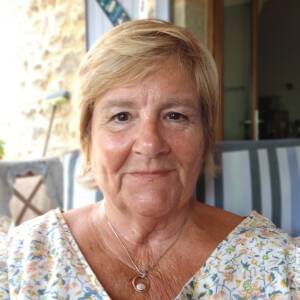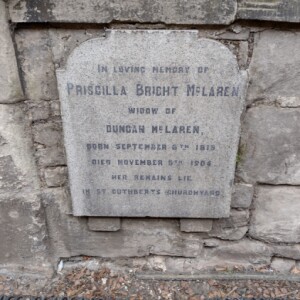Pleasance
A slightly busy day after waking at 3 a.m. Started off by my 12 weekly B12 boost, accompanied by some blood letting. It was a very dull morning so the auspices for doing the laundry were not good which meant I sat and sewed until it was time to go out.
I'd planned, or thought I might, walk to Pleasance but wrong shoes, and lack of practice went I got as far as just past Cameron Toll. This meant I had a bit of time at Pleasance Courtyard before the show, 'Fantastically Great Women'. On the way to get (an awful) coffee from The Beach House van I spotted the stone in the extra. Info on the person at the end.
The show was amazing. Such energy and the performances, especially by the young lead were brilliant. It was very uplifting and life affirming.
I'd planned to go home when I came out (by this time it was raining) but a flyer led me to book another show, 'Let's Talk about Philip'. Although it was about suicide it wasn't sad, a woman's journey to find out why her brother committed suicide. I then did go home. I also saw my first famous person of this Festival, Michaela Strachan, Springwatch etc.
Watched a bit of tv and then I baled, before 10. Felt like I'd had a busy day.
There is much talk of the bin strike. The streets are pretty manky though the Pleasance staff were doing a good job of keeping it clean and tidy.
The stone commemorates Priscilla Bright McLaren. I have no idea why her stone is where it is, the site used to be breweries. She died in 1906 aged 91 years at Newington House, Blacket Avenue. The house was demolished in 1966. She was the 3rd wife of Duncan McLaren 1800 - 1886, Lord Provost of Edinburgh, Member of Parliament and social reformer. Born in modest circumstances in Renton (West Dunbartonshire), McLaren was educated there and then at Dalmally, where his family had originated. At the age of twelve, he was apprenticed to a merchant in Dunbar (East Lothian) before setting up his own business as a draper in Edinburgh in 1824. He joined the Town Council in 1833 and became city treasurer in 1837. At this stage Edinburgh was bankrupt and McLaren is noted for restoring health to the city's finances. He also pioneered free education and undertook a school-building programme to cope with the demand. McLaren served as Lord Provost of Edinburgh (1851-54) and was noted for opening of the Meadows as a public park. As a radical Liberal, he worked to break the Whigs hold on local politics, and he went on to serve as Member of Parliament for Edinburgh (1865-81).
He lived at Newington House from 1852 until his death. He is buried in the graveyard of St Cuthbert's Church. McLaren was married three times and his children include politician Sir Charles McLaren (1850 - 1934) and jurist John McLaren (1831 - 1910). He is remembered by the McLaren Monument at Inverstrae..
Sounds like an interesting woman.


Comments
Sign in or get an account to comment.


